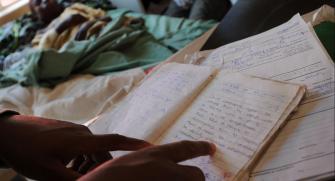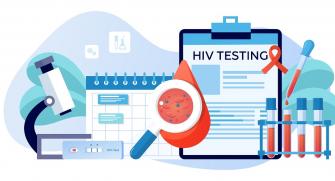How to effectively deliver HIV treatment to mobile fishing communities in Uganda?
The situation has changed slightly in recent years regarding HIV treatment: today the challenges include the fight against the emergence of resistance to antiretroviral treatment (ARV), access to tests to assess viral load, and also modes of delivery of treatment and care in line with the lifestyles of people living with HIV, whether they are children, adolescents, homeless or marginalized populations...
Different ways of accessing ARVs for different people living with HIV
Beginning 2015, WHO supported the development of so-called differentiated service delivery models for the delivery of antiretroviral treatment. They consist of a person-centered model that adapts care and treatment to ensure patients can lead regular lives. In other contexts, these approaches allow patients with controlled disease to obtain a few months of ARVs at once as opposed to monthly visits, simultaneously reducing the amount of ARV interruptions and the burden on the health system . Since 2017, the Ugandan Ministry of Health began offering these differentiated service delivery models among specific populations.
MSF is supporting the deployment of these delivery models in three districts in Uganda. Among the populations monitored by MSF teams are fishing communities that move along Lakes George and Edward in search of fish schools. A 2016 seroprevalence survey conducted by Epicentre among people living with HIV in this population found that a significant proportion of the HIV-infected population was already diagnosed and on treatment (86% and 78%, respectively). However, the viral load suppression rate, one of the key indicators for patient management, was only 67%, most likely due to poor treatment adherence.
Assessing delivery modes
"Mobility of the fisherfolk community interrupts access to ARV delivery sites and appears to be the main barriers to treatment adherence," explains Jihane Ben Farhat, Principal Investigator.
Since 2017, MSF teams have been supporting the Ministry of Health in differentiated service delivery to people living with HIV, specifically on two of the five services that the Ministry of Health has implemented: either rapid renewal with collection of ARVs for 3 to 6 months in health facilities, or delivery of ARVs by one person in a group of six who take turns every month to pick up the treatments. These two delivery methods facilitate uninterrupted access to ARVs. Thus, as 25 year old female in small fish-related business, who is part of a group of six people who take turns delivering, testifies, “Even when am busy, am assured of getting drugs unlike in other approaches where you waste the entire day going for drugs. but here drugs find me at home brought by peers. In addition, if you are away, it’s just a call away and a member of the group delivers drugs at your door step”
The question is which of these two models is more effective and better accepted by this population. Carol Liu, an epidemiologist, has put her PhD on hold to travel to Uganda to oversee this study. The first step is to determine the proportion of eligible people or groups of people who chose one or the other mode of delivery and to examine whether there are differences between people who chose one model versus the other. The next step is to evaluate clinical outcomes of retention in care at 6 and 12 months after joining either model and the viral load at 12 months. The final step is to hear from patients themselves and understand their experience and perceptions of the two models. "It is only when all these data are available that it will be possible to evaluate the effectiveness and acceptability of these two ARV distribution strategies, which will allow us document best practices," says Carol Liu. See you in a few months for the first results.
Although great progress has been made in the fight against the HIV epidemic in recent years, certain populations are still too often left behind because of their lifestyle. A one-size-fits-all approach to people living with HIV care is no longer sufficient; it must now be tailored to the needs of each individual patient so models of care can meet people where they are “But it is important to evaluate these delivery methods according to the lifestyle of the communities concerned to ensure their effectiveness and to enable us to improve the care of people living with HIV," concludes Jihane Ben Farhat.










